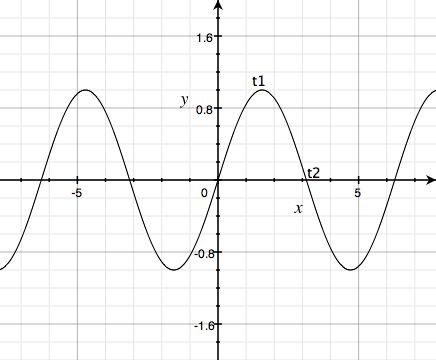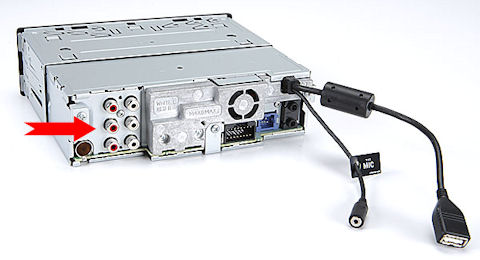Results 181 to 190 of 3070
-
April 9th, 2011 09:57 AM #181
Ganito po yung three rca pre out ng head unit, front, rear, and the sub, and maybe your domination atom amplifier nyo is just a two channel amplifier for driving maybe just the subs or the front speakers, if you used these amp for sub, ang gagamitin mong output from the head unit is the subwoofer output, if you used it for front speakers, you use front output of the head unit and so on. A 4 volts output from the head unit is a good thing(high volt), meaning, you have a great signal input to your amp so that you don't need any signal amplifier in line, a high volt capability also make your amp efficient because the gain setting sets at its lower portion, also in high volt head unit and three rca pree outs, One is sufficient but having two and three allow you fade, or adjust the levels of multiple amplifiers right from the head unit. your said
 head units now offer 4 volt outputs instead of the usual 1-2 volts. This can be very useful since cars have a lot of electrical noise in them. The 4 volt output is less prone to noise, however, you must be certain that the amplifier or crossover being connected to the output can handle 4 volts or you will not be able to use the extra voltage.
head units now offer 4 volt outputs instead of the usual 1-2 volts. This can be very useful since cars have a lot of electrical noise in them. The 4 volt output is less prone to noise, however, you must be certain that the amplifier or crossover being connected to the output can handle 4 volts or you will not be able to use the extra voltage.
-
April 9th, 2011 10:00 AM #182
 Head Unit Pre-Out Line Voltages and their significance to your audio system
Head Unit Pre-Out Line Voltages and their significance to your audio system
Head Unit Pre-Out Line Voltages and their significance to your audio system
When you shop for a head unit, the line voltage for the RCA jacks on the back of the radio are often advertised as being 2 volts, or 4 volts, or with some models such as Eclipse, as high as 8 or 16 volts. What does this all mean? Is more always better? What is the best voltage for your amplifiers? Will a higher line voltage mean a louder stereo system? Let's try to answer some of these questions, and by doing so, bring about a better understanding of what some of these marketing catch-phrases really mean to you.

First, I'd like to explain exactly what the line voltage is. The audio signal put out by your head unit to the amplifier(s) is an AC (alternating current) signal, like the one above, where the X axis represents the audio frequency being transmitted, and the Y axis represents the amplitude, or volume of the signal being sent.
The Y axis is measured in Volts (2 volts in each direction for a head unit that's advertised as a "4 volt pre-out" model) while the X axis, or frequency is measured in Hertz (Hz) or Kilohertz (KHz.)
The input stage of your amplifier has a gain setting, or input sensitivity knob which allows the installer to tune the input stage of the amplifier to match the voltage put out by the head unit. More about that is explained Here.
If the signal represented above includes a bit of noise introduced in the recording studio for the CD you're playing, or from the quiet hiss you often hear in some cars where the volume of the radio is turned up, but no audio signal is being played (between CD tracks for instance) then the more voltage you have at the line level (4 volts instead of 2 volts for example) on the Y axis, then the lower that amount of noise is going to be. This is called the "noise floor" and the higher your line voltage, the lower that noise floor will be. This is also represented as your "signal to noise ratio." With more voltage, the S/N ratio is higher, meaning more signal, less noise.
The other advantage to having a higher line voltage from your pre-outs is a higher resolution signal. The more amplitude (Y axis) you have in your source signal, the more detail you'll be able to squeeze into that waveform. Think of it like zooming in on a JPG image. If the original image is high resolution to start with, then when you expand the image to a larger size (as the amplifier does with the audio signal) then your resulting, larger image will be sharper, whereas if the original image is a low resolution thumbnail type image, then when it's enlarged, the image will not be as clear or detailed.
Now, the one thing to be aware of when looking at the line voltage of a head unit, is that most amplifiers made today have a limited range of input voltages that they are designed to accept, and the maximum line voltage for most amplifiers is in the 4 to 6 volt range. If you get a head unit with an 8 volt pre-out, and your amplifier only accepts a maximum line input voltage of 4 volts, then you can over-drive the input stage of the amplifier, and cause the amp to enter clipping. The way to avoid this is to do your research before purchasing your components for your audio system. If you do however, find yourself in this predicament, you can fix the problem by using an oscilloscope and a digital multimeter to observe the output voltage with a white or pink noise test tone at a 0dB reference output, and turn the head unit volume up until you see a clean 4 volt output. This is the volume you must not surpass to prevent clipping the signal at the amplifier. The use of a pre-amp with a volume control is one way to leave the head unit's volume control set to the required volume position, while allowing you full analog control over volume for the system.
Here's a picture of some RCA line-level pre-outs on a modern Alpine head unit.

-
 Verified Tsikot Member
Verified Tsikot Member

- Join Date
- Mar 2011
- Posts
- 7
April 9th, 2011 07:52 PM #183Thank you for the very detailed explanation sir! Good thing I also asked here 'cos I read from another forum that the only thing higher preout voltages do is that they just make the volume sound louder. I'm an ECE student but we haven't tackled this yet since we havent taken up our communications subject. Thanks again

-
April 12th, 2011 01:42 PM #184
Gusto ko palitan ng speakers yung car namin. Plan ko din bumili ng under-seat subs. May marerecommend ba kayong speakers na worth 3k+ lang? As much as possible, ayaw ko mag-lagay ng amps and subs na naka-kahon kasi sisikip lang yung likod. Gusto ko sana maganda medyo SQ yung set-up.

-
April 17th, 2011 07:45 PM #185
good day.
i just want to ask suggestions...
im happy with the stock set-up of my ride... pioneer head unit, 4 speakers (front and rear) and tweeters... ride btw is a pajero FM
may padala speakers from abroad.
ano maganda gawin maliban sa ibenta ito?hehe
replace my stock speakers? add these to the existing 4 speakers? thanks in advance
-
April 17th, 2011 08:07 PM #186
-
-
 Verified Tsikot Member
Verified Tsikot Member

- Join Date
- Apr 2011
- Posts
- 11
April 21st, 2011 07:54 PM #188salamat po sa mga precious idea nyo, now im planning to put some boom boom in my ride...salamat po ulit...
-
 Verified Tsikot Member
Verified Tsikot Member

- Join Date
- Dec 2009
- Posts
- 8
April 29th, 2011 02:11 PM #189Hello! Total newbie here when it comes to car audio. Bought a second hand car and would like a budget friendly SQ setup. Existing head unit is a Pioneer deh1350mp. Separates currently installed looks like infinity reference series though I'm unsure about the model. Rear speakers are stock. I'm looking at spending around 20k but would like to do it part by part. Probably amp and sub first then new separates. I need the space in the trunk so probably a single 10 or 12" sub is okay. I just want the low end filled in.
Please help me with selecting components, I know very little when it comes to car audio brands. I do however appreciate various genres of music. I want clean distortion free mids and highs with precise bass.
THANK YOU!
EDIT: Btw, I'm looking at the Rockford R300.4 Amp. Something that could power the fronts and a sub until I could buy a mono amp and have the multi power the rears as well.
-




 Reply With Quote
Reply With Quote


![Google Play audio set-up for beginners [continued]](https://play.google.com/intl/en_us/badges/images/generic/en_badge_web_generic.png)
and its right above an electric motor....
BYD Philippines